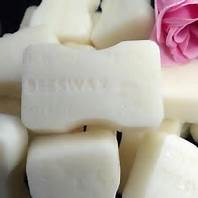EXFOLIANTS - Cosmetics Unmasked











EXFOLIANTS - Cosmetics Unmasked
Exfoliants, also commonly called exfolients, exfoliators, exfoliating agents, or skin peelers, are chemicals that soften or dissolce the outer layer of dead skin celle the horny or keratinized layer, or "stratum corneum" - allowing this layer to be removed. The belief is that fine lines and wrinkles will be removed along with the outer layer of skin cells. In fact, exfoliants may slightly improve the appearance of fine lines, help to remove discoloured or flaking skin, and reduce the incidents of blackheads.
Ingredients such as salicylic acid, alph and beta-hydroxy acids, phenols, trichloroacetic acid (TCA), and glucolic acid are potent exfoliants. They have been known to cause severe skin damage when used inconcentrations higher than recommended, left on the skin for longer than recommended, or used on parts of the body where the skin is thin.
Some people are particularly sensitive to these ingredientsand suffer adverse effects despite using them correctly. Because of the potential hazards, you should always be awareof when you are using exfoliating ingredients - and you may be unwittingly using them in cosmetics you use every day such as cleansing lotions or moisturizing creams. Beware such products that claim to renew skin, reveal fresher or younger-looking skin, or dissolve away fine lines or wrinkles.
Abrasive pads and bars of soap containing bran or oatmeal, are also used to exfoliate the skin.
Alpha-Hydroxy Acids (AHAs) and Beta-Hydroxy Acids (BHAs)
Alpha - and beta hydroxy acids are relatively new on the cosmetics sceneand are all an advertisers dream since the name rolls easily off the tongue and has the ring of frontier technology about it. They are commonly found in fruits or are derived from fruit or milk sugars and are milder forms of the exfoliants used by cosmetic surgeons to remove ald and wrinkled skin.
Words like "evitalizing," "softening," and "smoothing" are used to encourage these products, which take the form of cleansing lotions, moisturizing creams, skin conditioners, and even shampoos.
Because the epidermis acts as a waterproof barrier to keep out chemicals and some damaging ultra violet rays (protecting the more sensitive, living cells deeper in the skin), this layer is less elastic than the deeper , living layers making lines and wrinkles more noticable. Peeling off this layer can temporarily reduce these natural signs of aging and wear and tear, however, the skin's natural reaction to damage is to producer thicker tougher skin.
This is why manual workers grow calluses on their hands , and hikers and joggers produce thick calluses on their feet. The common reaction to this new, toughter skin is to use more of the exfoliant. Soon you are locked into a cycle of growing new skin and peeling it off.
Alpha - and Beta- Hydroxy Acids
You can easily identify alpha - and beta-hydroxy acids in the list of ingredients under the following names:
Alpha-Hydroxy acids - Lactic acid, mixed fruit acid, triple fruit acid, trialpha hydroxy fruit acids, sugar cane extract, glycolic acid, ammonium glycolate-hydroxyoctanoic acid, alpha-hydroxycaprylic acid, hydroxycaprylic acid, alpha hydroxy, and botanical complex and glycomer in crosslinked fatty acids alpha natrium.
Beta-hydroxy aacids - salicylic acid, tropic acid, trethocanic acid, and beta-hydroxybutanoic acid.
Both alpha-and beta-hydroxy acids - citric acid and malic acid.
Reference: Cosmetics Unmasked: Dr. Stephen & Gina Antczak
Articles-Latest
- Skin tags: Why they develop, and how to remove them
- So That’s Why Your Skin Gets Crepey As You Get Older
- Eye Infection from False Eyelashes
- Teeth stain removal and whitening solutions
- Benefits of collagen for skin
- Why vitamin E should be part of your skincare regime
- Can gray hair be reversed?
- Hair loss affects 1 in 10 women before the menopause – here’s how to treat it
- Conscious ageing and Black skin: What happens when Black does crack?
- Your skin color may affect how well a medication works for you — but the research is way behind
- The C word Cancer
- Astringents
- How does light therapy work? The science behind the popular skincare treatment
- The Most Offensive Fashion Police Criticisms of All Time
- Everything you need to know about lip filler migration, as told by the experts
- Pig semen and menstrual blood – how our ancestors perfected the art of seduction
- Everything you need to know about benzoyl peroxide
- We've bleached, relaxed, and damaged our hair to make ourselves look more white
- Will this be the year that facial filler is cancelled?
- Shock of the old: 10 painful and poisonous beauty treatments
Cosmetic ingredients
LOGIN
Who's On Line
We have 68 guests and no members online
Articles-Most Read
- Home
- White Bees Wax
- Leucidal
- Cosmetic Preservatives A-Z
- Caprylyl Glycol
- Cosmetics Unmasked - How Safe Are Colorants?
- Cosmetics Unmasked - Choosing Ingredients
- Cosmetics Unmasked - Colorants And Fragrances
- EcoSilk
- Toxic Beauty - Who's Looking At Cosmetics?
- Cosmetics Unmasked - Fragrances
- Microbes and Cosmetics
- Chemicals Lingering In The Environment
- Microbes and Safety Standards
- Yellow Bees Wax
- Potassium Sorbate
- Toxic Beauty - Hazardous To Your Health
- Synthetics In Cosmetics - The Industry Fights Back
- Fresh Goat's Milk Soap
- Active Ingredients
- What's Happening in the USA - Cosmetic Regulations - Toxic Beauty
- Cosmetics Unmasked - Listing Cosmetics
- Toxic Beauty - Cocktails and Low Doses
- Natural Waxes A-Z
- Natural Butters A-Z



